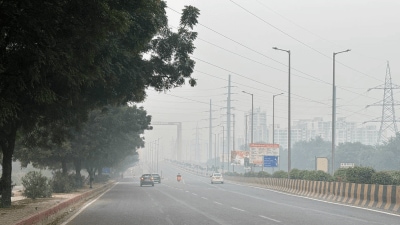HEMRL adds another feather
Pune February 9: Neslted in the serene surroundings of the Pashan lake, few realise that High Energy Materials Research Laboratory (HEMRL) i...

Pune February 9: Neslted in the serene surroundings of the Pashan lake, few realise that High Energy Materials Research Laboratory (HEMRL) is virtually a beehive of activity. Notching up yet another feather in its cap, this prestigious Pune-based laboratory under the Defence Research and Development Organisation (DRDO) has for the first time, developed a highly powerful insensitive material which has the capacity to resist the toughest of anti-tank missiles.
Realising the need to offer all possible protection to tanks of the Indian army, the organisation, renowned for its work in the area of high energy materials has developed an Explosive Reactive Armour (ERA), a first in the history of Indian defence research for protecting the army’s entire fleet of tanks.
Entrusted with the onerous task of indigenous development in the vital areas of high energy materials, HEMRL is the only lab in the country dealing with an entire spectrum of high energy materials starting from small arms, mortars, high energypropellants for guns, rockets and missiles to high explosives, pyrotechnics, illuminating compositions.
In view of the specialised nature of the job and sensitivity of project work, HEMRL has to design its own pilot plants for scale up before the transfer of technology to production units and sophisticated and advanced instrumentation systems to measure accurately explosive functioning to the last microsecond.
Speaking to The Indian Express, HEMRL director Dr Haridwar Singh said this was a totally novel concept which would offer ample protection to the tanks of the Indian army. Elaborating on the ambitious project undertaken by the DRDO laboratory, Dr Singh explained that here the “insensitive” material would be mounted onto tanks in single explosive panel and reducing the penetration of the most modern anti-tank missiles including the Milan missile to the extent of 80 per cent. This was achieved by the deflection of the warhead jet by an explosive force. All the panels are mounted onto thetank increasing its weight by almost one ton. Depending on its make, the weight of the tank varies from 40 ton to 50 ton, according to experts.
Citing it as a major achievement for the organisation, Dr Singh revealed that work had been in progress on this particular project in 1996. The project was completed by 1997 after which it was given out for user trials at the Mechanised Infantry Regimental Centre (MIRC) at Ahmednagar.
Since the trials have proved to be successful, the concept of the Explosive Reactive Armour has been accepted by the army, he said. In fact, this year will see the concept being formally commissioned into the Indian army with the armours being released for mass scale production shortly.



- 01
- 02
- 03
- 04
- 05




























